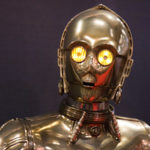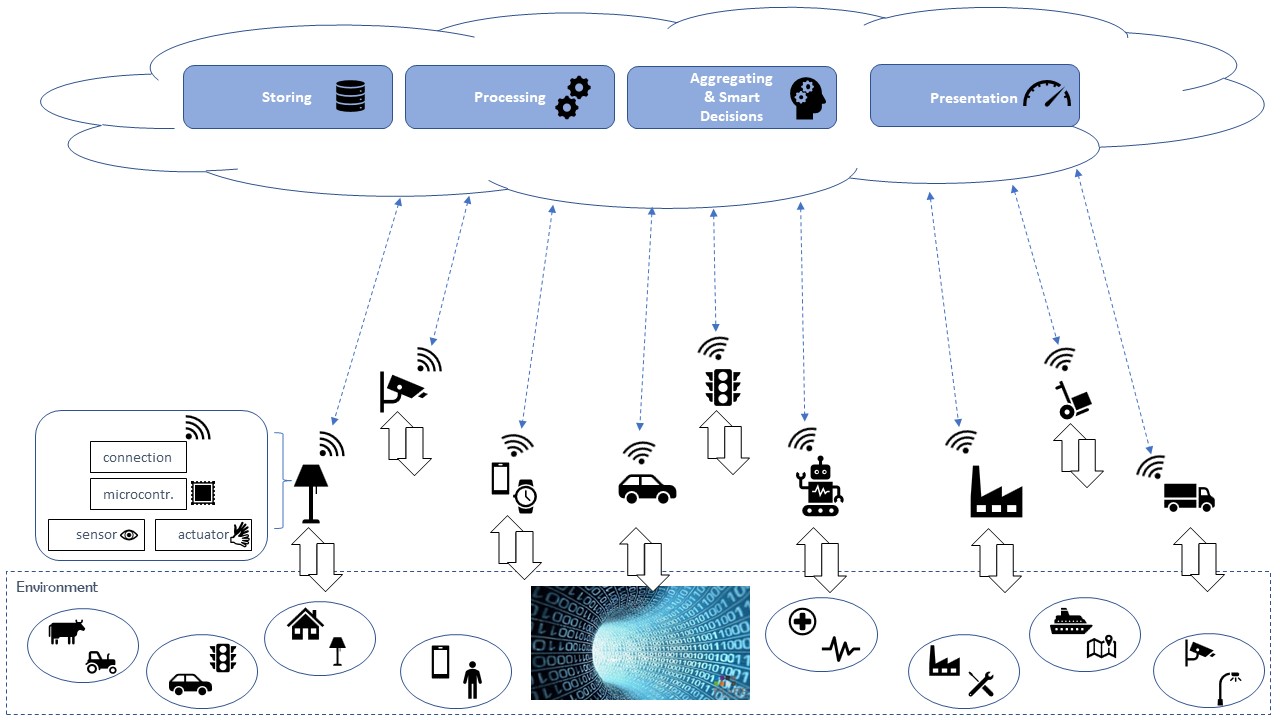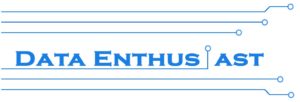Motivation
6:37 am, Monday morning,
The opaque curtains in your bedroom begin slowly to move and scarcely audible music is burbling out of the speakers. You’re still in a deep sleep not realizing the slight change of environmental parameters in your bedroom. Every minute the curtains open a bit more, the light shed in your room becomes brighter and also the music raises decibel by decibel like a trained team who wants to communicate to its master “it’s time to get up, mate”.
Finally at exactly 7 o’clock, due to the natural light and the pleasant noise, you open your eyes with happy smile on your face and the tiny chip in your wrist sends your blood values to the well-trained “wake-up team” to inform them if they’ve done a good job or If they’ve to be better the next time.
You get up, head out of your bedroom and … almost run into Donald, your house robot in C3PO-Style. Finally at exactly 7 o’clock, due to the natural light and the pleasant noise, you open your eyes with happy smile on your face and the tiny chip in your wrist sends your blood values to the well-trained “wake-up team” to inform them if they’ve done a good job or If they’ve to be better the next time.
Donald was just about to get the dirty laundry in the washing machine, but even with a full basket of laundry he managed early enough to avoid a collusion with you.
Now, he stands in front you with his camera-eyes saying “Good morning, master. How was your night?” You answer and have a quick chat with him about the game Arsenal vs. Liverpool because you missed to watch the game, but your eager aluminium-covered friend briefs you in an quite detailed fashion.
Entering the bath room you notice that your smart cupboard “George” just ordered new cosmetics obviously taking into account your seasonal varying habits, mood and current biological properties such as skin quality etc.
Being brushed up, you walk into the kitchen and smile again: Donald prepared an awesome salty breakfast. Exactly, the right thing you needed after a night with a couple of drinks.
But how did he knew? Maybe your treacherous electrolyte balance last night when you came home, let him predict the amount of salt you need in your breakfast to start good day.
Having finished this rich breakfast, you leave the apartment but not forgetting your blue, more warm jacket.
Donald told you that he predicted with the help of the temperature, wind speed and humidity forecasts at several locations you’ll be today that your felt temperature would be best with the blue jacket – what a good advice. Stepped out of the building, you choose after this very digital morning to take your good old bicycle to go to work.
Finally at exactly 7 o’clock, due to the natural light and the pleasant noise, you open your eyes with happy smile on your face and the tiny chip in your wrist sends your blood values to the well-trained “wake-up team” to inform them if they’ve done a good job or If they’ve to be better the next time.
The Internet of Things
The Scenario above might appear quite fictional (depending on the point of time you read the article) and in fact it is like you expected made up, but the technologies and their current development status aren’t so unrealistic. There are two key technologies/scientific paradigms which are making this above scenario possible and actually they’re embracing each other.
In the paradigm of Internet of Things (IoT) (everyday) objects such as the curtains, the cupboard or the speakers in the scenario are equipped with sensors, actuators as well as connection capabilities to exchange data via the internet and interact in a smart way in an ecosystem with each other
For example the lamp, a so called client in the network or ecosystem, on the left side of the Figure 1 could have aside its ability to enlighten the room also connection and limited calculation capabilities e.g. an microcontroller such as an ESP8266. Thus it is able to publish its current status (on/off) in the network, to subscribe to messages of other clients in the network and to change the status (on/off) of the light. An everyday object is thus transformed to a smart connected product and eventually intertwined with other smart, connected products (e.g. other types of lamps in the house) to a product system e.g. smart light system. This smart light system in turn could then be integrated in a larger context, a kind of system-of-systems, to deliver benefit to the user within the smart home.
And this paradigm isn’t limited to the smart home, but ranging from smart infrastructure, smart farming to smart cities and much more.
Some Example out of the World of IoT
While scientifics don’t quite agree on the term of the paradigm (Internet of Things or Internet of Everything), they don’t differ on the fact that within the network of things large amounts of data are produced and have to be stored, processed and mined to ensure an efficient interaction within the network.
To provide a clear understanding of the dimensions of data I am talking about: the telecommunication company Cisco for example is predicting 77 exabytes (1 exabyte = one billion gigabytes) of average monthly traffic generated just from mobile devices by 2022 which will represent 20 % of the total IP traffic. Put it a bit simpler to grasp the idea a bit easier: A smartphone in 2017 has generated on average 2 GB of traffic per month. In 2022, so the provider, a typic smartphone will produce 11 GB of monthly traffic on average. In addition to that revolutionary mobile communication technologies such as 5G provide greater bandwidth for even larger data transfer and innovative, data-intensive applications in the several sectors (e.g. Industrial sector with the Industrial Internet of Things (IIoT)).
Concerning the hardware performance to handle this large amount of (mobile) data, global player in the Internet business like Amazon, Google or Microsoft are providing highly scalable solutions and services to connect to devices, to store data and to analyze it. For example, the machine on which this website is running has been setup within a few clicks and with the help of a credit card. In addition to that, the service is highly scalable in performance as well as in storage and is nowerdays quite affordable – just to provide an insight on the simplicity and availability of such services.
Human beings are quite good in creativity, strategic or critical thinking and much more domains, but as it concerns the analysis of multidimensional, complex and in particular large datasets they reach quite quickly their limits without computational help. But also traditional algorithms following a complex set of decision rules predefined by the developer show their limits.
At this point, Artificial Intelligence and its Machine Learning algorithms are coming into play to allow smart decision making based on a learning process quite similar to human one.
The articles in the section „get started“ give an overview over the field and tries to draw a solid understanding of the key concepts such as AI, Machine Learning or Deep Learning which are the main topic of this blog.
Sources
- Atzori, L., Iera, A. und Morabito, G. (2010), The Internet of Things: A survey, in: Computer Networks, 54, 2010, 15, S. 2787-2805
- Bhatia, Richa (2018): How Do Machine Learning Algorithms Differ From Traditional Algorithms? Hg. v. Analytics India Magazine. Online verfügbar unter https://www.analyticsindiamag.com/how-do-machine-learning-algorithms-differ-from-traditional-algorithms/.
- Cisco (2019): Cisco Visual Networking Index: Global Mobile Data Traffic Forecast Update, 2017–2022. Hg. v. Cisco public.
- Columbus, Louis (2018): Roundup Of Cloud Computing Forecasts And Market Estimates, 2018. Hg. v. Forbes Media. Online verfügbar unter https://www.forbes.com/sites/louiscolumbus/2018/09/23/roundup-of-cloud-computing-forecasts-and-market-estimates-2018/#1f9314bc507b.
- Evans, Dave (2012): The Internet of Everything. How More Relevant and Valuable Connections Will Change the World. Hg. v. Cisco IBSG.
- Fleisch, E., Weinberger, M. und Wortmann, F. (2014), Business Models and the Internet of Things – Whitepaper, published by Bosch Internet of Things & Services Lab and University St. Gallen
- Lueth, Knud Lasse (2018): State of the IoT 2018: Number of IoT devices now at 7B – Market accelerating. Hg. v. IoT Analytics. Online verfügbar unter https://iot-analytics.com/state-of-the-iot-update-q1-q2-2018-number-of-iot-devices-now-7b/, zuletzt aktualisiert am 08.08.2018.
- Perera, C., Zaslavsky, A., Christen, P. und Georgakopoulos, D. (2014), Context Aware Computing for The Internet of Things: A Survey, in: IEEE Communica-tions Surverys & Tutorials, 16, 2014, 1, S. 414-454
- Porter, M.E. und Heppelmann, J.E. (2014), How Smart, Connected Products Are Transforming Competition, in: Harvard Business Review, 92, 2014, 11
- Poniszewska-Maranda, Aneta; Kaczmarek, Daniel (2015): Selected methods of artificial intelligence for Internet of Things conception. In: Proceedings of the Federated Conference on Computer Science and Information Systems (5), S. 1343–1348.





